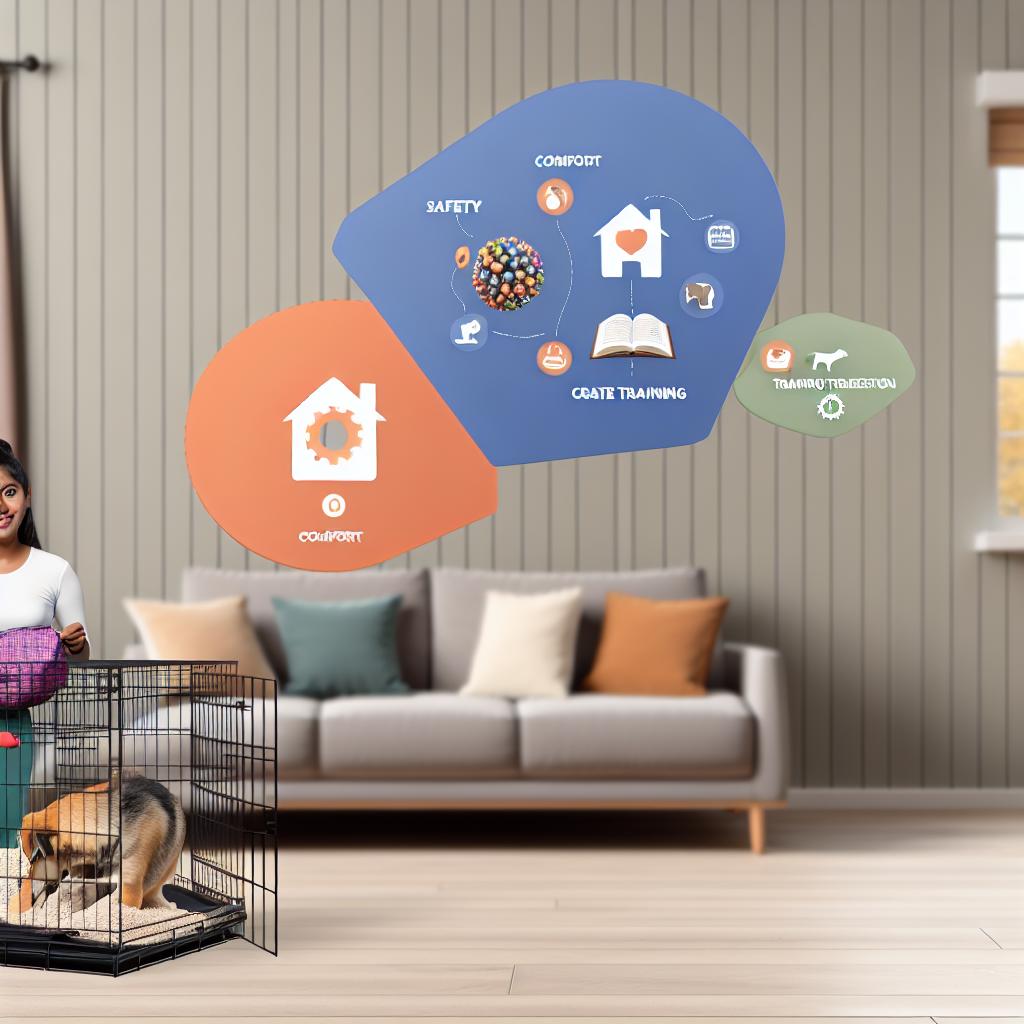
Crate training is a structured approach employed by dog owners to establish a safe and secure environment for their pets. It involves utilizing a specially designed enclosure, commonly known as a “crate,” which serves as a personalized den for the dog. This technique, when applied correctly, can effectively address an array of behavioral and management challenges in dogs.
Crate training begins with selecting the appropriate crate size. The ideal crate should offer enough space for the dog to stand, turn around, and lie down comfortably without feeling cramped. The design of the crate is fundamental; therefore, it should be a place where dogs feel comfortable and secure, rather than a source of punishment. Ensuring the crate is seen as a positive space is crucial, as this perception helps dogs relax within their designated area. By providing dogs with a specific space to call their own, crate training can help regulate anxiety and give them a private refuge from potentially stressful situations.
Safety and Security: A principal benefit of crate training is the augmented safety it offers. Dogs left unattended may encounter hazardous situations, such as chewing on electrical cords or ingesting harmful substances. By confining a dog to a crate during periods when supervision is unavailable, owners can alleviate certain risks and ensure their pet remains in a safeguarded environment. This containment strategy not only protects the dog but also grants peace of mind to the owner.
House Training Assistance: Another significant advantage of crate training is its efficacy in promoting house training. Dogs naturally avoid soiling their sleeping areas. By providing an appropriately sized crate, dog owners encourage their pets to hold their bowels and bladder until they are let outside, thereby facilitating the house-training process. This method not only teaches the dog to control its bodily functions but also inculcates a routine that aligns with the owner’s schedule.
Travel Aid: For dogs that are familiar with crate training, the crate transitions into an excellent tool for travel. A dog accustomed to its crate recognizes it as a haven, which can substantially reduce stress during trips or when staying in unfamiliar surroundings. This traveling aid ensures that the dog consociates travel with a sense of security, thus making the journey more enjoyable for both the animal and its owner.
The process of crate training requires patience and consistency to achieve effective results. Here are steps to implement crate training successfully:
Adults and puppies alike should be introduced to the crate gradually. Start by leaving the crate door open and allowing the dog to explore its new environment at its own pace. Avoid forcing the dog inside, as this may create a negative association with the space. To make the crate alluring, consider placing treats, toys, or comfortable bedding inside. Positive associations can be strengthened when the dog recognizes the space as a source of comfort and joy.
Gradually, owners can begin to close the crate door for brief periods while staying nearby to reassure the dog. It is important to extend the duration of crate confinement gradually, ensuring that the dog remains calm and comfortable. The objective is for the dog to perceive the crate as its steadfast personal area, rather than as a place of confinement. Building up to longer time intervals can be done over several days or weeks, depending on how quickly the dog adapts to the new arrangement.
During the early stages of crate training, it’s crucial to monitor the dog’s behavior and adjust the training schedule based on its responses. Some dogs may require more time and encouragement to become fully comfortable with spending extended periods in their crate. Consistent practice and positive reinforcement are key factors in easing the dog’s transition into crate training.
Crate training presents various advantages, from enhancing safety to assisting in house-training endeavors. When implemented correctly, it offers dogs a secure environment and aids owners in managing different facets of their pet’s behavior. Success in crate training hinges on the owner’s understanding of the dog’s individual needs and the patience exercised throughout the process. For more in-depth resources on crate training techniques, readers can explore additional materials available through professional pet organizations and trainers, such as the ASPCA’s website, which provides comprehensive guidance. Implementing crate training practices effectively leads to a mutual sense of satisfaction and security for both dog and owner, fortifying the human-animal bond.